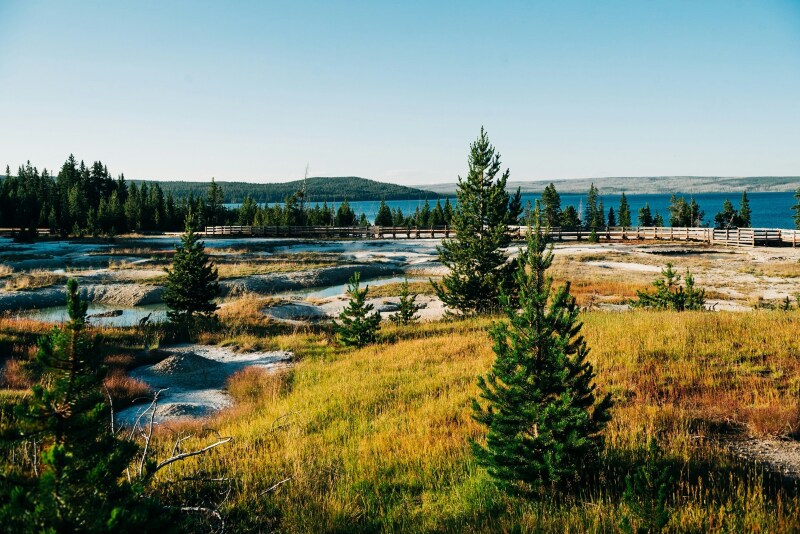The National Park Foundation (NPF), the nonprofit arm of the National Park Service, recently announced it received a $100 million grant, the largest donation in the agency’s 108-year history.
“This transformative grant . . . celebrates a pivotal moment in safeguarding the future of America’s treasured national parks,” the NPF said in a press release.
The funds came from Lilly Endowment Inc., one of the world’s largest private philanthropic foundations. The donation was timed with the National Park Service’s birthday, August 25, the same day President Woodrow Wilson established the agency in 1916.
“For over 50 years, private philanthropy has played a vital role in bridging the gap between park needs and available funding,” Will Shafroth, president and CEO of the NPF, said in a statement. “This grant will allow us to supercharge our efforts to ensure our national parks are for everyone, for generations to come.”
This grant helps the NPF to get closer to its goal of raising $1 billion by 2028 for the Campaign for National Parks, a historic fundraising effort to ensure the parks’ future. Though specific plans for the donation haven’t been finalized (the foundation said it hopes to announce the first round of projects deriving from this donation later this year), four focus areas have been identified. Here’s what you need to know about how the influx in funding could change the national park experience in the coming years.
Preserving threatened parks and wildlife
From the retreating glaciers in Kenai Fjords and Glacier National Park to the withering Joshua trees in their namesake park, the nation’s protected lands are being overwhelmingly harmed by the effects of climate change. Making the parks more resilient to changing weather and rising temperatures is one of the core goals of fundraising efforts, according to the NPF, as is making the parks more sustainable, with projects that will reduce waste, conserve water, and provide more renewable energy.
Another element is making the habitats work better for the at-risk wildlife that has long called them home, such as the Florida panther, the wolves in Yellowstone, and the sea turtles in the U.S. Virgin Islands. Already, the National Park Service is working to remove invasive grasses to restore the rare desert frogs to their natural habitat at Saguaro National Park in Arizona, through previous funding from the Campaign for National Parks. Similarly, some funds will be used to buy land around the park boundaries to stop habitat fragmentation and establish wildlife corridors.

The hope is that efforts will also benefit at-risk wildlife, such as the wolves that call Yellowstone National Park home.
Photo by Natalia Behn/Unsplash
Improving the visitor experience amid surging crowds
Per the NPF, more than 400 national park units across the country see roughly 300 million visitors annually, which is expected to increase to 500 million by 2040. Preparing for those crowds while still allowing them to connect with nature is another goal the agency will use the funds to work toward.
Some priorities include expanding accessibility in the parks, exploring new and more efficient modes of transportation within the parks (like the electric shuttle buses coming to Zion), and upgrading campgrounds and visitor centers (like the new 15,000-square-foot exhibit space planned at the Lincoln Memorial).
Telling a more inclusive story
Another cornerstone of the project is “delivering a more comprehensive historical narrative, including the experiences of communities whose voices and contributions have not been fully told as a part of the American story,” according to NPF.
In practice, that will require sharing more expansive records of what happened at these sites. A recent example: The National Park Service recorded the memories of those who witnessed the uprisings commemorated at Stonewall. Another component involves acquiring parkland that tells a more complete and diverse story of the country. That’s been the goal of many of the most recent national monuments—Baaj Nwaavjo I’tah Kukveni and the Emmett Till and Mamie Till-Mobley National Monument, to name two—that were designated as part of a larger effort to recognize an area of special importance to minority communities.
Inspiring future generations of outdoor enthusiasts
The final pillar of the program involves creating more opportunities for young people “that will foster a deeper understanding of history, appreciation for environmental stewardship, and connection with our natural world.”
To achieve that, the NPF plans to find ways to remove barriers to access the parks, including providing transportation and field-trip opportunities, hiring seasonal education rangers, and creating initiatives like Open OutDoors for Kids, a program for fourth graders in underserved communities to experience the parks in person.








